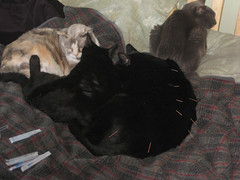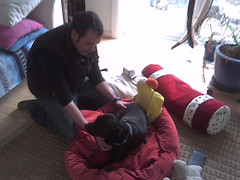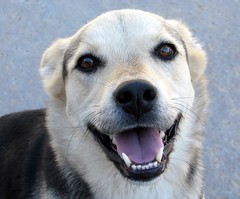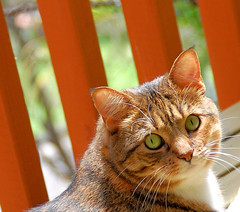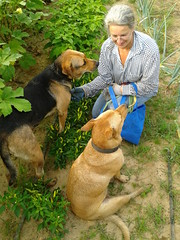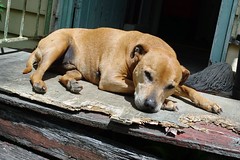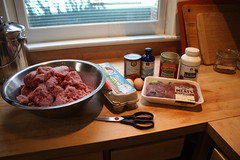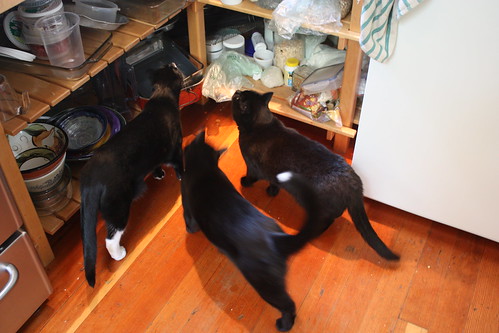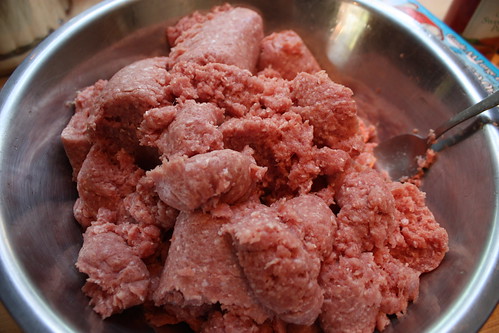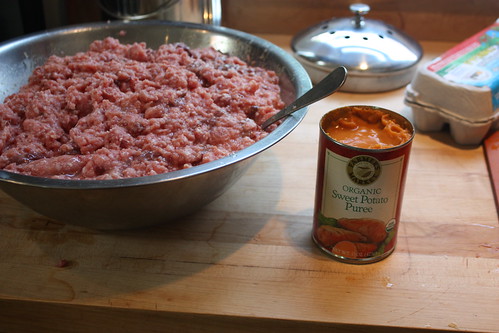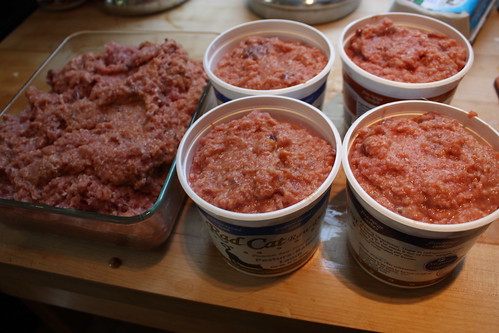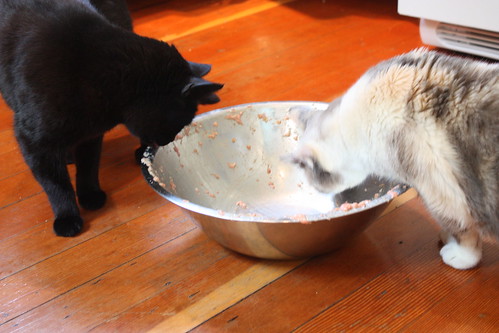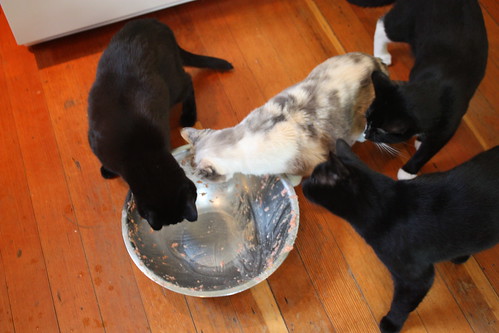Infrared light therapy for kidney failure, incontinence and arthritis in dogs and cats
Saturday, October 20th, 2012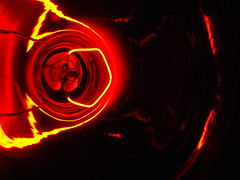 In Chinese medicine we often use a moxa stick for when we need to drive cold out of an area or to improve blood flow. Moxa is a mixture of mugwort and other herbs that are made into a charcoal stick which can be heated and lets off infrared light. Moxa is then used over acupuncture needles or points. Many of my clients have seen me use moxa in the clinic. With our animal friends you need to use caution because you are holding a charcoal hot stick and it is important to not burn our animal friends or set hair on fire.
In Chinese medicine we often use a moxa stick for when we need to drive cold out of an area or to improve blood flow. Moxa is a mixture of mugwort and other herbs that are made into a charcoal stick which can be heated and lets off infrared light. Moxa is then used over acupuncture needles or points. Many of my clients have seen me use moxa in the clinic. With our animal friends you need to use caution because you are holding a charcoal hot stick and it is important to not burn our animal friends or set hair on fire.
Many times I want to use moxa treatments more often than I am treating an animal and a good way to have people get a similar action is with an infrared light. These lights can be purchased in the reptile section of pet stores and are usually 50 or 75 watts or from Amazon.com. Never get a bulb over 75 watts as you can easily burn your dog or cat. I have people buy the bulbs and then put the bulb in a clamp lamp. Many people already have a clamp lamp around the house or you can buy one from home depot or the hardware store or more expensive ones at the pet store.
What conditions can infrared light help with?
- Kidney failure in cats is the number one place I have people use infrared light therapy. I only use infrared light for ischemic kidney failure, not inflammatory kidney failure. Most older cats with kidney failure have the ischemic type. If you are unsure see Kidney Failure in Cat – How Chinese Medicine and Diet Can Help. Infrared light helps to open up blood circulation into the kidneys and wake up kidney cells that are still living but have inadequate blood flow. I have had cats that have reverted back to normal kidney blood work in as little as 2-3 acupuncture and heat treatments. Of course this depends on the cat and how damaged the kidneys are and how long they have been damaged. Most cats love heat therapy!
- Incontinence in dogs – usually with incontinence I use a combination of infrared therapy, herbs and acupuncture. Heat therapy is however a large part of my treatments especially in young dogs. In Chinese medicine we consider incontinence in young female dogs to be cold that has gotten into the bladder during spay surgery. With acupuncture, herbs and infrared light therapy you are driving that cold out of the body. And yes it does work in about 80% of young dogs who can be gotten off western medication and live out their lives without incontinent issues. In the older dogs incontinence is considered a deficiency of kidney yang or kidney fire. Infrared therapy over the kidney yang points can help to stoke this fire and help them to hold urine. See Incontinence – stoking the blue fire sea serpent.
- Infrared heat can really help with arthritis support in older dogs and cats. Infrared light therapy helps improve blood circulation, drives out cold and helps with pain control. I use moxa or infrared light over any joints that are sore and often along the back. Infrared heat can also be used over the kidney points to improve energy.
So how do I use infrared heat therapy?
-
- Buy a infrared light bulb, 50 or 75 watts. Once again do not use a light over 75 watts!. Use a clamp lamp from the hardware store or the pet store. Here is a link to buy an infrared bulb on Amazon.com
. Clamp lamps can also be purchased through Amazon.com.
- Buy a infrared light bulb, 50 or 75 watts. Once again do not use a light over 75 watts!. Use a clamp lamp from the hardware store or the pet store. Here is a link to buy an infrared bulb on Amazon.com
- I usually have people start out with using the bulb once or twice a week for 5-10 minutes at a time. You can do it daily if your dog or cat likes it. Also if they really like it you can set up a bulb a few feet above your dog or cat’s bed and let them sit under it and “self-medicate”. Never leave the bulb on when you are not home and if you animal can not walk or move do not use this option as it is important that they can move away if they get too hot.
- When you are using the bulb on your animal, hold the clamp lamp at least a light bulb width away from their body. Move it slowly in figure eights or hold it for 30 seconds or less at a time and then move it slightly to make sure you do not overheat an area. If the bulb is further away this is not as important.
- For kidney failure or incontinence you want to use the infrared light over the area of the acupuncture point ming men (aka GV4). The best way to find this point is to find the most caudal part of the last rib and then make a perpendicular line to the spine from it and follow it up to the spine. Ming men is the point in the middle of the spine that forms a right angle with the caudal point of the last rib. Here is a photo of a woman touching ming men in a horse, the area of her hand is where you want to focus your heat therapy.
- For arthritis therapy – use the same technique but work over joints and along the spine. Do not use heat therapy along the thoracic spine because there is a danger of using too much heat over the liver, which does not like to be hot. Do not worry about this if you are letting an animal “self medicate” and the bulb is up higher. I especially like the “self medicate” option for older cats who just love the heat.
- If your animal is prone to seizures do not use infrared heat therapy without directions from a trained veterinarian. Used in the wrong place this treatment can potentially induce seizures in an animal prone to them.
- If your animal has cancer do not use infrared therapy without the direct of a veterinarian. Absolutely never us it over a tumor.
- If your animal gets worse from heat therapy – stop
- If your animal runs very hot, gets overheated easily, or has large inflammed joints check with your veterinarian. This therapy can make these conditions worse if used incorrectly.
- Do not use this therapy when it is very hot outside
I especially like this therapy in the fall and winter when the sessions are changing and that cold wind creeps into the joints of our old cats and dogs.







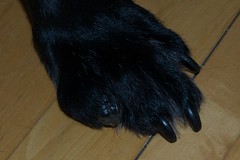
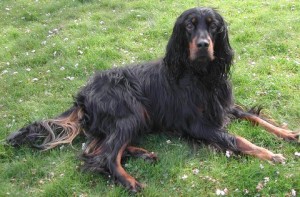
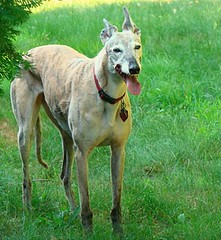
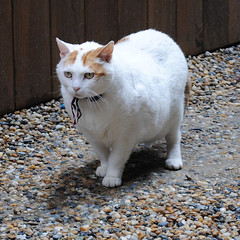
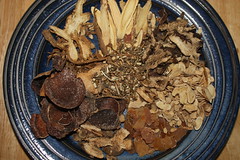


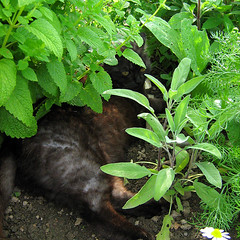
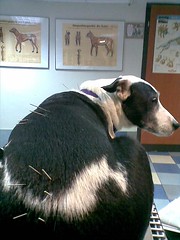
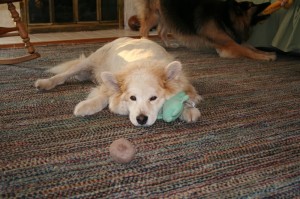 Rooney is unusual in that I only worked with acupuncture with her and not herbs. For most of the animals I treat I recommend an integrated approach that combined acupuncture, herbs and often times some western treatments as well.
Rooney is unusual in that I only worked with acupuncture with her and not herbs. For most of the animals I treat I recommend an integrated approach that combined acupuncture, herbs and often times some western treatments as well.